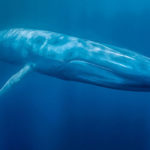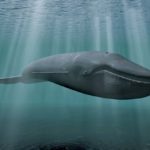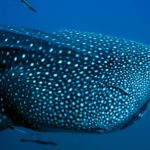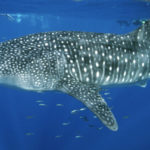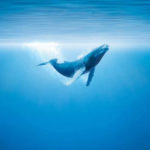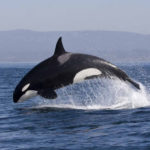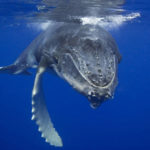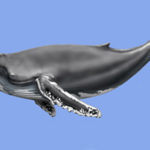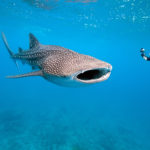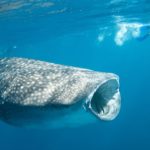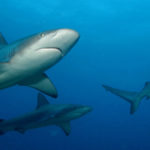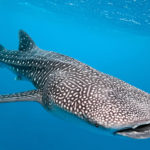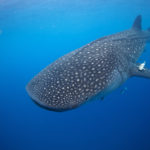The largest animal in the world
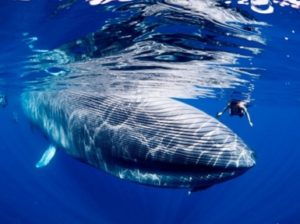 The largest animal in the world is the blue whale, other names are bled or blue whale. It lives in the waters of the oceans. The maximum length of the whale, which was recorded by scientists, is more than 33 meters. And the weight of the largest animal in the world can reach up to 150 tons.
The largest animal in the world is the blue whale, other names are bled or blue whale. It lives in the waters of the oceans. The maximum length of the whale, which was recorded by scientists, is more than 33 meters. And the weight of the largest animal in the world can reach up to 150 tons.
On average, the vomit lives from 80 to 90 years. Although in nature there are also centenarians. However, scientists still have much to learn about the life expectancy of this marine giant.
The heart of the largest animal is the size of a small car, amounting to a thousand kilograms in mass. It pumps 8,000 liters of blood through the vessels. Pulses average 8 beats per minute. The weight of the tongue puked is equal to the mass of one African elephant, i.e. 4 tons. The sense of smell of this sea monster is very poorly developed. But he has excellent hearing and touch.
The female has been vomiting for 11 months. She breeds offspring approximately every two years. It happens in the winter. The baby has a poorly developed fat layer that could protect it from the cold, so with the onset of winter, a female whale leaves cold waters and migrates to warm areas. The weight of the baby at birth can reach up to 3 tons, and the length – up to 9 meters. A mother feeds her cub with milk for 7 months. During this period of time, the length of the body of the “baby” increases three times, and in weight it reaches 23 tons.
Inside the jaws of the largest animal in the world are black plates. They act as a filter because the whale has no teeth. The whalebone prevents the large inhabitants of the ocean from falling into the mouth, and also does not let out small crustaceans, fish, and plankton with which it feeds. The shape of the whale is reminiscent of a triangle directed base down. Its length can be up to a meter in the back rows of the mouth, and the closer to the front, the smaller the plate becomes, reaching 50 cm. Its width is on average 0.52 m, and the weight can reach 90 kg. Whalebone consists of keratin. The plates can be from 540 to 800 pieces. It all depends on the size of the individual.
Previously, whale kit was used as a material for the manufacture of corsets, crafts, brushes, mattresses, as well as furniture. This caused the mass destruction of blue whales. Whaling was banned, so the blue whale population is slowly recovering.
You do not need to think that the largest animal in the world is a huge vacuum cleaner that thoughtlessly sucks in water. This is a sensitive, dexterous predator. The blues need a huge amount of feed. He eats up to 8 tons of food per day, so places with a large accumulation of plankton are suitable for feeding a whale. This is not to say that krill does nothing, but only waits for it to be eaten. Each animal in a cluster of krill is desperately fighting for life. They sometimes run away surprisingly fast, so the whale sometimes has to change direction, bend so as not to lag behind the crustaceans that run away from it.
Scientists do not yet fully know how blue whales seek their food. Maybe memory plays a major role here, and they remember where they used to find a lot of food. Perhaps they smell plankton when they rise to the surface to take in air. Or, they look for crustaceans by ear. The best way to find out the whale’s diet is to examine its feces. It is this method that scientists use.
The study of whales is complicated by the fact that they spend very little time on the surface of the ocean. It’s hard to see something, except for the back with the fin. Everything else is hidden under water. Therefore, patches of exfoliated skin are an excellent material for research. Thanks to the skin, you can get the genetic data of a particular individual, as well as about the population as a whole. Scientists are looking for pieces of skin to determine the sex of the animal and other information. After diving a blue whale, a trace remains on the surface of the water, which also serves as an additional source of information for scientists.
